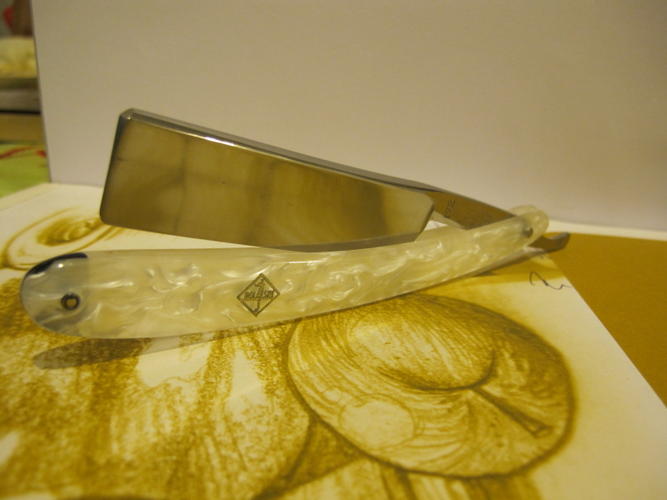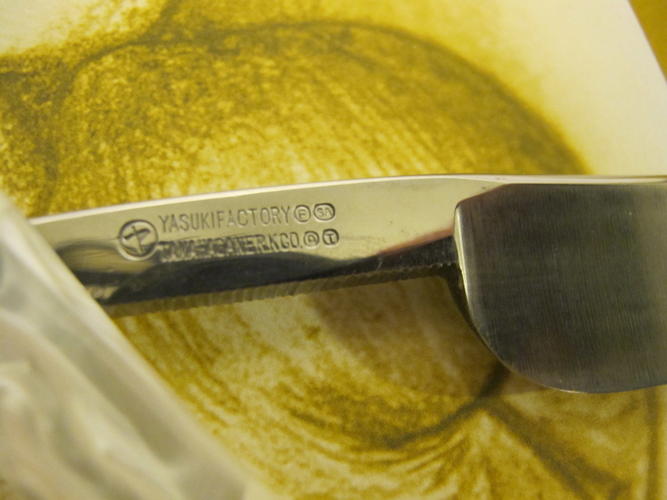Daishi Tamahagane
by , 07-21-2011 at 02:34 AM (5830 Views)
I have tried a few Japanese made western straights before and loved them. The steel used by Japanese for tools , knives, planes, saws, razors is always top quality.
Because of my great experiences with Japanese straights, I started collecting collecting them, a few weeks back I got myself a NOS Daishi Tamahagane razor.
Whether this razor is made from Tamhagane- like steel or not I do not know, but it turned out to be a very interesting razor to hone.
I started with my usual bevel setter a Naniwa Chosera 1k, and did 20 circles on each side of the razor followe dby 10 x-strokes, then took a look at the edge with my scope. Not enough , so I did the same count one more time and this time the bevel was set, excpet there was a lot of microchips along the edge. I have honed a lot of razors on that stone and never seen anything like that. So I went to the next in line 1k Shapton GS, it did ok job but still not very nice looking bevel.
The bevel condition after two very consistent bevel setters led me to thinking the steel is indeed very hard if it chipped so easy. From previous experience, I knew Coticule is a very good stone for hard steels, so I put the razor to my coticules and did the dulicot with great results, I managed a nice even bevel. I am very fond of coticules, but I like to go higher on the finish scale so I went to my Oozuko and used Mejiro and tomonagira as a progression and finished on water only. I followed the same method described here and I was able to get the edge where I like it, very smooth and sharp.
From the whole experience I can't say if the steel is with similar properties to Tamahagane or not (I have never tried a traditional tamahagane edge) but it was pretty hard, harder than a Solingen for example.
The razor did not disappoint during the shave test, the shave was easy and BBS.
I am happy with this new addition to my Japanese Razor collection, they are all great shavers.












